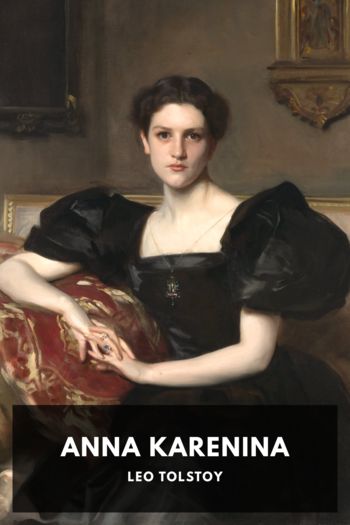What Is Art? Leo Tolstoy (good books to read for 12 year olds TXT) 📖

- Author: Leo Tolstoy
Book online «What Is Art? Leo Tolstoy (good books to read for 12 year olds TXT) 📖». Author Leo Tolstoy
What is this strange conception “beauty,” which seems so simple to those who talk without thinking, but in defining which all the philosophers of various tendencies and different nationalities can come to no agreement during a century and a half? What is this conception of beauty, on which the dominant doctrine of art rests?
In Russian, by the word krasota (beauty) we mean only that which pleases the sight. And though latterly people have begun to speak of “an ugly deed,” or of “beautiful music,” it is not good Russian.
A Russian of the common folk, not knowing foreign languages, will not understand you if you tell him that a man who has given his last coat to another, or done anything similar, has acted “beautifully,” that a man who has cheated another has done an “ugly” action, or that a song is “beautiful.”
In Russian a deed may be kind and good, or unkind and bad. Music may be pleasant and good, or unpleasant and bad; but there can be no such thing as “beautiful” or “ugly” music.
Beautiful may relate to a man, a horse, a house, a view, or a movement. Of actions, thoughts, character, or music, if they please us, we may say that they are good, or, if they do not please us, that they are not good. But beautiful can be used only concerning that which pleases the sight. So that the word and conception “good” includes the conception of “beautiful,” but the reverse is not the case; the conception “beauty” does not include the conception “good.” If we say “good” of an article which we value for its appearance, we thereby say that the article is beautiful; but if we say it is “beautiful,” it does not at all mean that the article is a good one.
Such is the meaning ascribed by the Russian language, and therefore by the sense of the people, to the words and conceptions “good” and “beautiful.”
In all the European languages, i.e. the languages of those nations among whom the doctrine has spread that beauty is the essential thing in art, the words “beau,” “schön,” “beautiful,” “bello,” etc., while keeping their meaning of beautiful in form, have come to also express “goodness,” “kindness,” i.e. have come to act as substitutes for the word “good.”
So that it has become quite natural in those languages to use such expressions as “belle âme,” “schöne Gedanken,” of “beautiful deed.” Those languages no longer have a suitable word wherewith expressly to indicate beauty of form, and have to use a combination of words such as “beau par la forme,” “beautiful to look at,” etc., to convey that idea.
Observation of the divergent meanings which the words “beauty” and “beautiful” have in Russian on the one hand, and in those European languages now permeated by this aesthetic theory on the other hand, shows us that the word “beauty” has, among the latter, acquired a special meaning, namely, that of “good.”
What is remarkable, moreover, is that since we Russians have begun more and more to adopt the European view of art, the same evolution has begun to show itself in our language also, and some people speak and write quite confidently, and without causing surprise, of beautiful music and ugly actions, or even thoughts; whereas forty years ago, when I was young, the expressions “beautiful music” and “ugly actions” were not only unusual but incomprehensible. Evidently this new meaning given to beauty by European thought begins to be assimilated by Russian society.
And what really is this meaning? What is this “beauty” as it is understood by the European peoples?
In order to answer this question, I must here quote at least a small selection of those definitions of beauty most generally adopted in existing aesthetic systems. I especially beg the reader not to be overcome by dullness, but to read these extracts through, or, still better, to read some one of the erudite aesthetic authors. Not to mention the voluminous German aestheticians, a very good book for this purpose would be either the German book by Kralik, the English work by Knight, or the French one by Lévêque. It is necessary to read one of the learned aesthetic writers in order to form at firsthand a conception of the variety in opinion and the frightful obscurity which reigns in this region of speculation; not, in this important matter, trusting to another’s report.
This, for instance, is what the German aesthetician Schasler says in the preface to his famous, voluminous, and detailed work on aesthetics:—
“Hardly in any sphere of philosophic science can we find such divergent methods of investigation and exposition, amounting even to self-contradiction, as in the sphere of aesthetics. On the one hand we have elegant phraseology without any substance, characterised in great part by most one-sided superficiality; and on the other hand, accompanying undeniable profundity of investigation and richness of subject-matter, we get a revolting awkwardness of philosophic terminology, enfolding the simplest thoughts in an apparel of abstract science as though to render them worthy to enter the consecrated palace of the system; and finally, between these two methods of investigation and exposition, there is a third, forming, as it were, the transition from one to the other, a method consisting of eclecticism, now flaunting an elegant phraseology and now a pedantic erudition. … A style of exposition that falls into none of these three defects but it is truly concrete, and, having important matter, expresses it in clear and popular philosophic language, can nowhere be found less frequently than in the domain of





Comments (0)